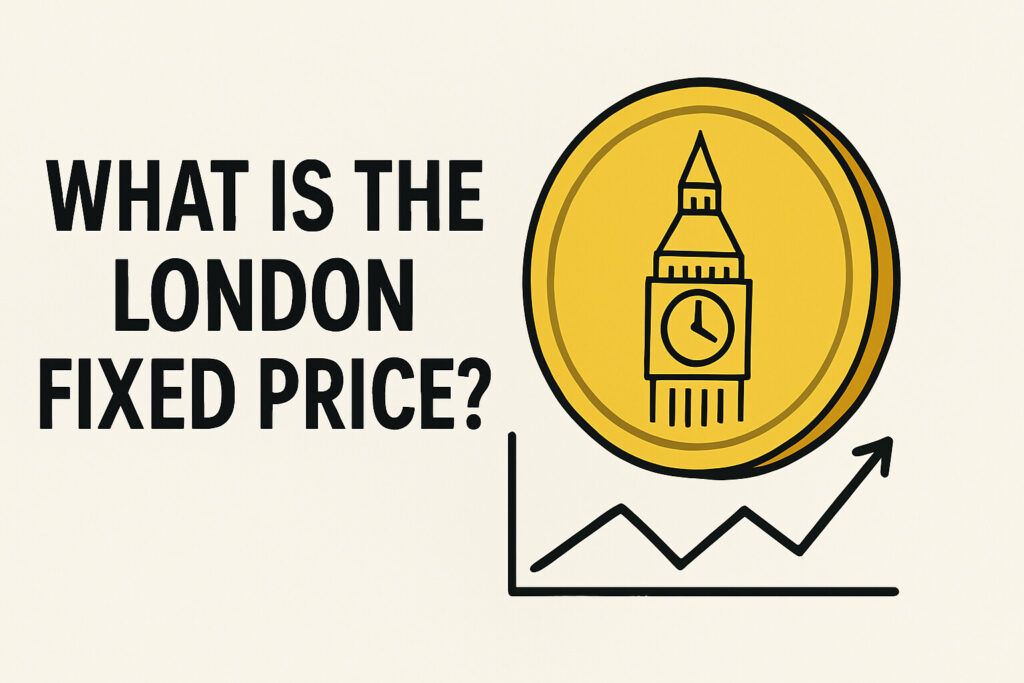
The London Fix Price stands as one of the most influential benchmarks in the global precious metals market, setting daily reference prices that ripple through the entire bullion industry. From major institutional traders to individual investors, this century-old pricing mechanism affects how gold and silver are valued worldwide, directly impacting the bullion premiums that retail investors pay when purchasing physical metals.
What Is the London Fix Price?
The London Fix Price, formally known as the LBMA Price, is a daily benchmark price for precious metals established by the London Bullion Market Association (LBMA) and its member banks. These institutions represent the largest over-the-counter (OTC) traders of physical metals globally. The primary purpose of the Gold Fixing is to establish a price for settling contracts within the London bullion market. However, its influence extends far beyond London’s financial district.
The process involves setting an agreed-upon price based on current buying and selling interest in the market. For gold, this happens twice daily at 10:30 AM and 3:00 PM London time, while silver receives a single daily fix at noon. There are fifteen direct participants who have been on-boarded to contribute to the LBMA Gold Price. These participants include major financial institutions like Barclays, HSBC, and other leading bullion banks.
The Historical Foundation of London’s Dominance
The London Gold Fix traces its origins to September 12, 1919, when five principal gold bullion traders gathered at N.M. Rothschild & Sons’ offices in London. The gold price was determined to be £4 18/9 (GBP 4.9375) per troy ounce. This inaugural meeting established a tradition that would endure for over a century, cementing London’s position as the global center for precious metals trading.
The fixing process has evolved significantly since those early days. Originally conducted face-to-face with participants raising small Union Jack flags to pause proceedings, the process transitioned to telephone conferences in 2004 and now operates through sophisticated electronic systems. Despite these technological advances, the fundamental principle remains unchanged: creating a single reference price that balances supply and demand across the market.
How the Fix Price Works
The fixing process operates as an auction mechanism designed to find equilibrium between buy and sell orders. The process begins with the fixing chairman proposing a price near the current spot market value. Participating banks then indicate whether they have net buying or selling interest at that price level.
If buying interest exceeds selling interest, the proposed price rises. Conversely, if sellers dominate, the price falls. This iterative process continues until the gross amount of buy orders matches the gross amount of sell orders across all participating banks.
Normally it’s a 10 or 15-minute process, but it can take up to half an hour. During extreme market volatility, such as Black Monday in 1987, the process took over two hours to reach agreement.
The Relationship Between Fix Prices and Bullion Premiums
Understanding the London Fix Price is crucial for anyone investing in physical precious metals because it directly influences the bullion premiums investors pay. Physical gold, silver, and platinum bullion coins and bars typically command higher prices than the spot price for each respective metal — a difference known as the price premium.
The fix price serves as a baseline for dealers worldwide when pricing their inventory. Retail investors purchasing gold or silver coins and bars will pay the fix price plus additional bullion premiums that cover various costs including refining, minting, distribution, insurance, and dealer margins. The fixed price system allows for lower premiums, ultimately resulting in more affordable precious metal prices for consumers.
During periods of high market volatility or strong physical demand, bullion premiums can increase significantly above the fix price. This occurred notably during the 2008 financial crisis when physical silver remained expensive despite falling spot prices, demonstrating how market dynamics can cause substantial divergence between paper and physical metal prices.
Who Uses the London Fix Price?
The fix price serves multiple stakeholders across the precious metals ecosystem:
Institutional Players: Large banks, hedge funds, and institutional investors use the fix to execute substantial trades at a common price, avoiding the complexity of negotiating multiple transactions at varying prices.
Mining Companies and Refineries: These producers rely on the fix price to value their inventories and negotiate long-term supply contracts. The benchmark provides certainty for forward planning and financial reporting.
Central Banks: National treasuries and central banks reference the fix when valuing gold reserves or conducting official sector transactions.
Retail Dealers: Bullion dealers worldwide use the fix as a baseline for pricing physical products, adding their bullion premiums to arrive at retail prices.
Individual Investors: While most retail investors cannot trade directly at fix prices due to the large size of standard gold bars used in institutional markets (typically 400-ounce “good delivery” bars), they benefit from the fix’s price transparency and market stability.
Get Gold & Silver Insights Direct to Your Inbox
Join thousands of smart investors who receive expert analysis, market updates, and exclusive deals every week.
Modern Evolution and Regulatory Changes
The London Fix underwent significant reforms following regulatory scrutiny in the 2010s. In 2014 the FCA found that a Barclays trader had manipulated the London gold fix, and the British bank was fined £26m. This incident catalyzed comprehensive changes to enhance transparency and prevent market manipulation.
In 2015, the LBMA assumed direct oversight of the fixing process, implementing stricter governance standards and regulatory compliance measures. The benchmark is now administered by ICE Benchmark Administration (IBA), an independent third party that ensures proper conduct and transparency. These reforms have strengthened market confidence while preserving the fix’s essential function as a global pricing benchmark.
Impact on Investment Strategies
For precious metals investors, understanding the London Fix Price and its relationship to bullion premiums is essential for making informed decisions. The fix provides a transparent reference point for evaluating dealer prices and comparing offers across different vendors.
Investors can use the fix price to:
- Assess whether dealer premiums are reasonable given current market conditions
- Time purchases around fix announcements to potentially secure better prices
- Understand price movements in ETFs and other investment products that track the fix
- Evaluate the fair value of mining stocks and precious metals derivatives
The Future of Precious Metals Pricing
In a rapidly evolving financial landscape, the London Fix remains a vital anchor for price transparency in precious metals. It continues to set a trusted global benchmark that helps investors navigate volatility and compare bullion premiums with confidence.
For investors, the key takeaway is clear: understanding the London Fix helps you make smarter, more informed decisions—whether you’re buying a single coin or managing a diversified portfolio. Despite modern technological shifts, this century-old pricing ritual remains a cornerstone of reliable, real-time gold valuation.
With gold and silver showing strong performance year-to-date — up 27.6% and 19% respectively — now may be an opportune time to consider expanding your precious metals allocation. Understanding the London Fix empowers investors to evaluate premiums more accurately and make informed decisions in real time.
Whether you’re adding a single coin or building a diversified portfolio, we’re here to help.

GoldSilver: Investing in Physical Metals Made Easy
GoldSilver lets you invest in real physical precious metals with flexible options to buy, sell, store, and take delivery. You’re in complete control.
Open an AccountDisclaimer: This article is for informational purposes only and should not be considered financial advice. Always conduct your own research or consult with a qualified financial professional before making investment decisions.









